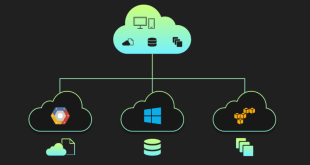In the rapidly advancing digital landscape, serverless computing has emerged as a transformative solution, revolutionizing the way developers build and deploy applications. The concept of serverless computing allows developers to focus solely on code, without the burden of managing servers. However, as technology demands continue to grow, so does the need for real-time responsiveness. Enter “Edge Computing,” a cutting-edge approach that pushes the boundaries of real-time responsiveness in serverless architectures. In this blog, we will explore the rise of edge computing and its pivotal role in enhancing the performance and user experience of serverless applications.
Understanding Serverless Computing: The Foundation
Before delving into the realm of edge computing, let’s revisit the essence of serverless computing. Serverless architecture allows developers to build and run applications without managing the underlying infrastructure. In this model, cloud providers dynamically manage resource allocation, ensuring optimal scalability and cost efficiency. The serverless paradigm enables developers to focus on code development, leading to faster deployment and reduced operational overhead.
What is Edge Computing?
Unraveling the Concept of Edge Computing
Edge computing is a distributed computing paradigm that brings computation and data storage closer to the location where it is needed. Instead of relying solely on centralized data centers, edge computing leverages a network of edge nodes or devices situated near the end-users or data sources. These nodes process data locally, minimizing latency and enhancing real-time responsiveness.
Edge Computing in the Context of Serverless Architectures
Edge computing and serverless architectures form a synergistic relationship. By integrating edge computing with serverless, developers can extend the capabilities of their applications, enabling real-time processing and reducing the dependency on distant data centers. This convergence paves the way for a new era of ultra-responsive, low-latency applications.
Pushing the Boundaries with Edge Computing in Serverless Architectures
Enhanced Performance through Edge Computing
The integration of edge computing in serverless architectures allows data processing to occur closer to the end-users, reducing data transit time and minimizing latency. This translates into a significant performance boost, particularly for applications that demand real-time responsiveness, such as live streaming, gaming, and IoT applications.
Scalability and Load Balancing Advantages
Edge computing enables intelligent load balancing and efficient resource utilization. By distributing processing tasks across edge nodes, applications can handle sudden spikes in traffic and scale dynamically, ensuring seamless user experiences during peak demand.
Data Privacy and Security
With edge computing, sensitive data can be processed and stored locally on edge nodes, enhancing data privacy and security. This approach reduces the risk of data breaches and ensures compliance with data protection regulations.
Offline Functionality
Edge computing also facilitates offline functionality for applications. By caching essential data on edge nodes, applications can continue to function even when connectivity to the central cloud is lost, ensuring uninterrupted user experiences.
Edge Computing Use Cases in Serverless Environments
Real-time Data Processing in IoT Applications
In IoT (Internet of Things) scenarios, edge computing plays a vital role in processing data generated by connected devices in real-time. This capability allows IoT applications to respond swiftly to critical events, such as sensor data indicating anomalies or emergency situations.
Live Video Streaming with Minimal Latency
Edge computing enhances the live video streaming experience by reducing buffering and latency. With edge nodes handling video processing tasks closer to viewers, live streams can be delivered with minimal delays and interruptions.
Enhancing Mobile Applications
For mobile applications, edge computing brings computational power closer to the user, reducing reliance on cellular networks and improving app responsiveness. This results in smoother user interactions and a better overall user experience.
Edge AI for Enhanced Decision-making
Edge computing enables AI-powered applications to make real-time decisions on the device or edge node, without the need to transmit data back to centralized servers. This empowers applications with faster and more efficient decision-making capabilities.
Commonly Asked Questions
Q1: What is the main benefit of edge computing in serverless architectures?
A1: Edge computing reduces latency by processing data closer to end-users, resulting in faster response times and improved real-time responsiveness.
Q2: How does edge computing enhance data security in serverless applications?
A2: Edge computing allows data to be processed and stored locally on edge nodes, reducing the need to transmit sensitive data to distant data centers, thus enhancing data privacy and security.
Q3: Can edge computing be used in combination with cloud-based serverless platforms?
A3: Yes, edge computing can complement cloud-based serverless platforms, allowing developers to extend the capabilities of their applications and enhance user experiences.
Q4: Does edge computing require a specialized network infrastructure?
A4: While edge computing benefits from a well-optimized network, it doesn’t necessarily require a specialized infrastructure. Existing networks can be leveraged to deploy edge nodes strategically.
Q5: What types of applications can benefit most from edge computing in serverless architectures?
A5: Applications that require real-time processing, low latency, and offline functionality, such as IoT applications, live streaming, and mobile applications, can benefit significantly from edge computing.
Final Words
The rise of edge computing in serverless architectures marks a paradigm shift in application development. By leveraging edge computing, developers can achieve unprecedented real-time responsiveness, enhance security, and deliver exceptional user experiences. As technology continues to evolve, the synergy between edge computing and serverless architecture promises a future where applications seamlessly meet the growing demands of a hyper-connected world.
 webfily
webfily



